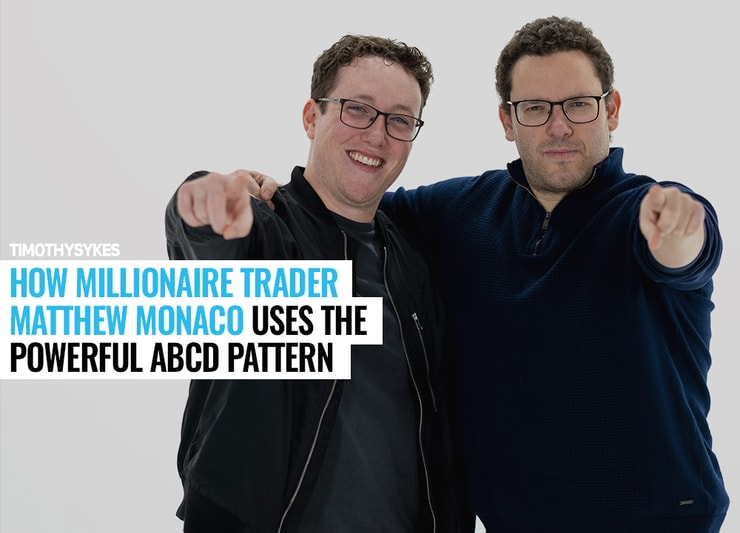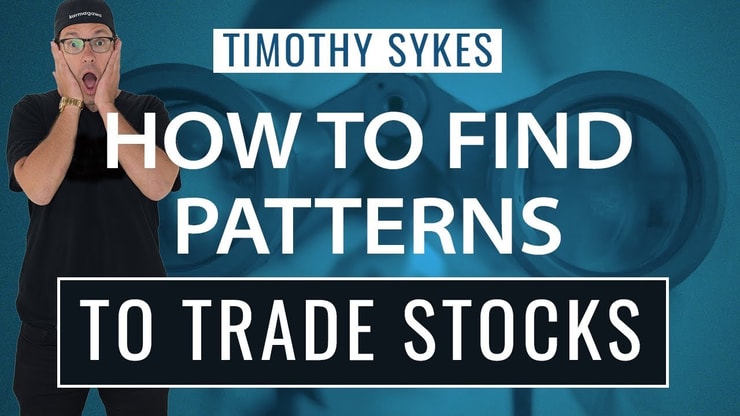The ABCD Pattern: Key Takeaways
- The ABCs of the ABCD pattern…
- How top traders like Matthew Monaco use this pattern…
- Check out today’s great example and see the pattern on the chart…
The ABCD pattern is one of the most recognizable day trading patterns. It’s not exactly my go-to, but Trading Challenge mentor and millionaire trader Matthew Monaco trades it sometimes.
Matt joined the Challenge in 2017. He crossed the $1 million milestone adapting penny stock patterns like ABCD to his strategy.* So we’ll get a little perspective from him in breaking down this setup.
Want to learn more from Matt? Check out the 30-Day Bootcamp. We filmed it before he crossed $1 million in trading profits.* In Matt’s words, “Everything I learned in the first two years I tried to break down into 30 days. That way, if you’re a new trader, you don’t need two full years to build the foundation.”
Table of Contents
What Are Penny Stocks?
First, you have to understand that I trade and teach my students to trade penny stocks.
These stocks trade below $5 a share and tend to have a small market capitalization.
Why would I play stocks that cost so little? Because they’re volatile.
A lot of these companies don’t do much. Sometimes they’re just shell companies that exist to sell stocks. So you should never trust these stocks. Penny stock land is a sketchy place…
But that means any press release could potentially send them into a volatile spike.
The key is knowing how to ride the volatility wave — you have to get in and out fast.
Penny stocks can spike big. That gives you the opportunity to take the meat of the move. But in the end, they always come crashing back down. The pumps behind the moves aren’t sustainable.
So you have to stay safe. Using patterns like the ABCD can help you do that…
What’s the ABCD Pattern?

Traders use this pattern to identify entry and exit points for volatile periods.
Matt says the pattern helps him determine which stocks are capable of spiking. It also helps him spot entry levels.
Back in July 2020, Matt used it to trade Ocugen, Inc. (NASDAQ: OCGN) for $3,751 in profits.* Remember, singles add up!
Quick note: Traders can play this pattern long or short. I don’t short much these days. And Matt usually uses the ABCD pattern to take long positions. But let’s get a quick overview of the bearish and bullish versions of this pattern…
Bullish ABCD Pattern
This is the strategy for long-biased traders like Matt. The ABCD refers to four main points in price action — A, B, C, and D.
- A is a strong morning breakout that sets the day’s high.
- B is a big pullback after the morning spike that sets a local low. It usually doesn’t retrace to the open. So it’s not the low of the day, but you can tell it’s a dip.
- C is a small spike back toward point A, but it ends up consolidating instead of rushing back to the breakout level.
- Finally, D is a breakout past the previous high of day (HOD) at point A.
Matt says to think of the stock like a runner … “He sprinted as far as he could and crashed. Then he regained his strength around midday and was able to sprint to new highs.”
Bearish ABCD Pattern
I don’t suggest shorting for newbies. It’s just too risky, especially when it comes to volatile penny stocks.
Short positions can end up losing more than they put in. Remember the GameStop Corp. (NYSE: GME) short squeeze? Tons of short sellers got their accounts blown up. That’s just one example.
But for some traders, like my millionaire student and Trading Challenge mentor Tim Lento, shorting can be a profitable strategy.*
I encourage my students to get as much exposure to the stock market as they can. We all have different strengths and weaknesses, so we might not trade the same stocks or setups. Just like how Matt will sometimes play the ABCD pattern, but I look for panic dip buys.
The bearish version of this pattern is like the bullish pattern but flipped upside down.
- It begins with a sharp decline, setting a low of the day at point A.
- Next, it pulls back up and puts in a local high to form point B.
- Then, there’s a small dip and some consolidation to form point C.
- Finally, it rockets back down below point A for a breakdown — that’s point D.
What to Consider When Trading the ABCD Pattern
Now you have the basics of the pattern. But for that information to be of any use to you, you still have to know how to play it. Here are Matt’s insights…
More Breaking News
- IREN’s Unexpected Surge: Breaking Down the Latest Performance Data
- Archer Aviation’s Unexpected Surge: What’s Fueling the Takeoff?
- Why Helius Medical Technologies’ Stock Flew Up 24%! Exploring the Latest Surge
Entry Point

Matt’s a long-biased trader. In his words, “If you follow my journey at all, you know that around 99% of my trades are long.”
So he looks to buy in around point C on the bullish pattern. That way he’s watched the pattern set up and progress.
There’s less risk at this point because he’s buying at a higher low with some support under it. And if he gets in far enough under the breakout level, he can get out for safe profits even if it craps.
Exit Point
There are two main exit points to look for…
Sometimes the pattern fails. When that happens, you must recognize the weakness and obey rule #1 — cut losses quickly!
If the stock fails to make new highs or peaks above before failing, get out. The breakout could fail and you’ll be stuck holding the bag.
If everything goes well, the stock will rocket past point A to new highs … That’s when to safely take profits into strength.
The key is knowing when it’ll work …
Low Volume on Consolidation

Matt says an important part of the pattern is a low-volume consolidation. Make sure to pay attention to how many shares are being traded and at what levels.
Learn to read these stocks like a book. Absorb all the data you can.
High Volume on Breakout
In order for the breakout to be successful, enough traders have to buy through all the bag holders from the morning.
If the stock makes new highs but there’s not enough volume, sellers will push it back down.
So if you’re in a stock and it starts to break out, keep an eye on the volume to confirm your thesis.
If you’re ever worried about whether or not there will be enough volume, focus on plays with news. As Matt says, “You want a stock trading great volume with a catalyst. It increases its spike-ability.”
Example
Here’s a good example of an ABCD breakout on Cyberlux Corp. (OTC: CYBL) from September 20, 2021.
They won’t all look like this. Stock trading isn’t an exact science, but you get the point.

Now that you know all about this pattern, practice looking for it in the market. Don’t just file this knowledge away as ‘that stock pattern I learned one time.’ Apply your knowledge to learn more.
Conclusion

It took Matt three years of dedicated studying, honing, and working his butt off before hitting the $1 million mark.* Part of that included using patterns that fit him, like the ABCD.
Will this pattern work for you? Like I said, all traders are different. You might not like trading this one. But you won’t know until you study and maybe paper trade it.
Expose yourself to as many trading styles as possible. My “Pennystocking Framework” DVD is just one great resource.
Think you’re ready to take the next step in your trading career? Apply for my Trading Challenge. I don’t accept everybody. You’ll have to prove you’re ready to put in the work.
I want dedicated students. You have to study hard for a chance to make it as a day trader. And just by reading this post, you’re on the right track. Staying on is the hard part.
What do you think about the ABCD pattern? What’s your favorite trading pattern? Drop a comment below!
Disclaimers
*Results are not typical and will vary from person to person. Making money trading stocks takes time, dedication, and hard work. Most who receive free or paid content will make little or no money because they will not apply the skills being taught. Any results displayed are exceptional. We do not guarantee any outcome regarding your earnings or income as the factors that impact such results are numerous and uncontrollable.
Timothy Sykes has a minority shareholder interest in the platform. Tim has also hired Matt Monaco to help in his education business.






Leave a reply